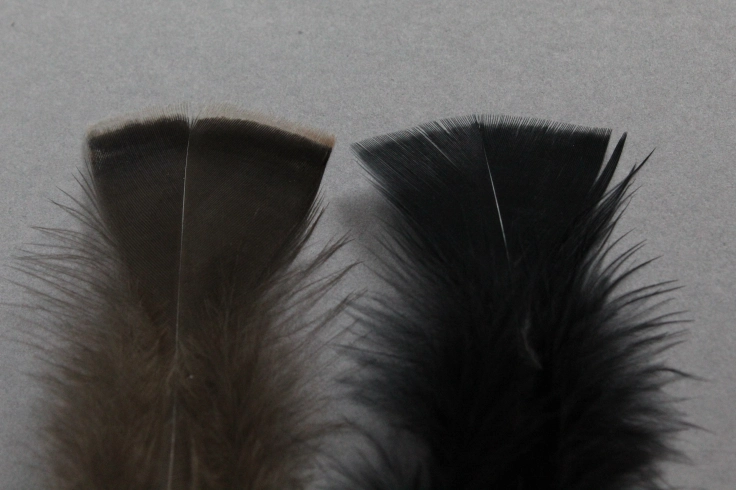Have you ever wondered where feather accessories, and items such as boas and dusters come from?
Feathers arent obtained humanely from animals. They likely came from terrified birds who were killed for their flesh or skin.
Just like buying items made with down, purchasing ones made with feathers supports the cruel meat and exotic-skin industries, because many farmers who raise birds for food or clothing make an extra profit by selling their feathers.
If youre ready to give industries that abuse animals the bird, here are some items to avoid and suggestions about what to purchase instead:
Feathers Are Almost Always Real.
First off, theyre real. 100% of the time, unless theyre clearly made out of something like wood or paper, craft feathers are real. While there are a few decent replicas out there, there is no way to cheaply produce even vaguely convincing feathers on a large scale. Feathers have such a complex and microscopic level of detail that theres no way humans could even begin to approach the level of detail found in the simplest of feathers. If it looks, feels, and moves like a feather, its a feather.
Most people dont have much experience with feathers or birds, so theyre unfamiliar with what a feather should feel or look like in the first place. Here are some justifications Ive heard from people who dont believe that craft feathers are real, and Ill provide my explanations. (To see these justifications in context, check out these links: [1][2][3][4])
When people say this, they are likely referring to the rigid, shiny quality of the central shaft of a feather, formally known as the rachis. While they may have the outward appearance of plastic, feathers and the rachis are made from keratin, the same protein that makes up fingernails. Feathers are no more plastic than your fingernails are.
The poultry meat industry (i.e. turkeys, chickens, ducks, geese) produces a very large amount of feathers as a by-product. As a consequence, craft store suppliers can manufacture and sell craft feathers at very low cost. These feathers may be of questionable quality, but they are certainly real and affordable. While certain bird feathers are rare, expensive, and highly coveted, poultry feathers are definitely not.
These terms mean different things to different people. Based on any of the aforementioned presumptions, a vendor who has no knowledge of how their supplier obtains feathers could defend marketing their handcrafted feather product as “synthetic.” A seller could have more shady intentions, though. They misrepresent feathers as a cruelty-free, vegan substitute by labeling them with phrases that sever their connections to the meat industry. Although it’s obviously a highly unethical marketing tactic, it does help them reach a larger potential customer base.
A while back, I purchased a bag of mixed craft feathers from Michaels. I did not realize until recently that the feathers belonged to a few different species instead of just one, as I had originally thought. Thanks to this, I can showcase a number of different feather types that are commonly sold as craft feathers.
Boas and Feather Dusters
Workers at the biggest ostrich slaughterhouses in the world were caught on camera forcing young ostriches into restraints, stunned with electricity, and then had their throats chopped. The birds’ feathers are ripped from their still-warm bodies moments later, and they are then skinned and chopped.
Feathers are used in Moulin Rouge and carnival costumes, as well as in feather dusters, boas, and accessories. Some feathers are even torn from the skin of conscious ostriches.
Feather-free materials are being creatively and compassionately used by burlesque dancers and kind designers today. Check out these bird-friendly boas:
Domestic Turkey (Meleagris gallopavo domesticus)

The feather to the far left is a Wild Turkey (Meleagris gallopavo) feather for reference; the other three are dyed craft feathers. Domestic turkey body feathers, sometimes marketed as turkey flats, make up the majority of the cheap craft feathers youll see. The Broad-breasted White turkey is one of the more common breeds raised commercially; I imagine that their white feathers are easier to dye and require no bleaching.

The squared-off tip of turkey body feathers is their most distinctive characteristic.
FAQ
Are craft feathers real or fake?
What birds do craft feathers come from?
Are feather boas made from real feathers?
How are peacock feathers sourced?